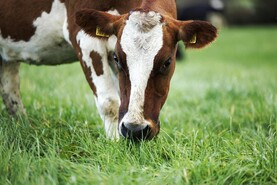Temporary grazing agreements
A combination of strong grass supplies, difficult ground conditions and BEAM stocking rate reductions on beef farms is creating more demand for store lambs and also starting to open up the availability of short-term grazing agreements.
It is important to note that under the terms and conditions of Areas of Natural Constraint, the person in charge of lands cannot rent it out on a short-term basis as it is deemed as relinquishing control. Short-term grazing agreements where sheep are brought in on a temporary basis are, however, allowed.
The requirement to notify the Department of Agriculture of sheep movements depends on the type of farm to which the sheep are moving. Where sheep are moving to a farm with no stock, they can be moved to and from temporary grazing without notifying the Department. Where sheep are moving to a farm where there are livestock present, the Department must be notified. There is no change in ownership, however, and therefore the onus for notification lies with the owner of the sheep. It can be carried out by sending the pink copy of the dispatch document to your local regional veterinary office. Notification of the return from temporary grazing is completed by sending the white copy of the dispatch document clearly marked “return from temporary grazing” to your local veterinary office.
A regular exception to the above situation is where sheep are moved to a farm where there are livestock present but are moved to a separate land parcel to where animals are located. In such circumstances, sheep can be moved to the separate land parcel without notifying the Department.
Drafting progress
The Teagasc target for a mid-season flock lambing from the start to mid-March is to have at least 45% of lambs drafted by mid-August and 70% of lambs drafted by mid-September. Replacement ewe lambs which have been selected for keeping should also be included in this figure. It is worthwhile reviewing your performance and assessing how far lambs remaining on the farm are from finishing.
Marking some randomly selected lambs when weighing and using this to monitor performance over a period of time will provide a useful guide as to whether lambs are on target for finishing. In current conditions, with challenging grass utilisation and a low dry matter content, lamb performance is likely to range anywhere from 100g/day to 150g/day, with performance at risk of dropping below this level where grass quality is poor. If weight gain is behind target, then concentrates will be required to underpin performance.
Virtual sheep week
With farm walks and open days not possible due to coronavirus restrictions, Teagasc has taken the decision to host a virtual sheep week to provide farmers with an update on the latest sheep research and technical advice. Each evening from 21 to 25 September there will be a live webinar broadcast from Athenry and available to view on multiple online platforms including the Teagasc website and Facebook page. The webinars run from 7pm to 8pm and cover grassland management, breeding and genetic improvement, hill sheep and finishing store lambs, flock health and lastly policy and environment.






 This is a subscriber-only article
This is a subscriber-only article










SHARING OPTIONS: